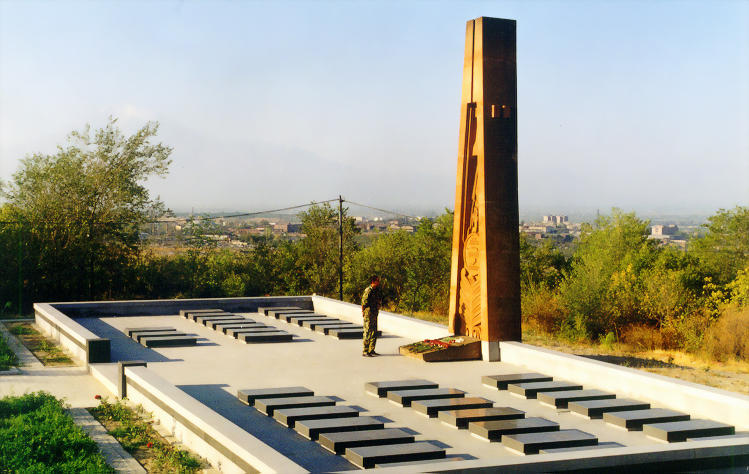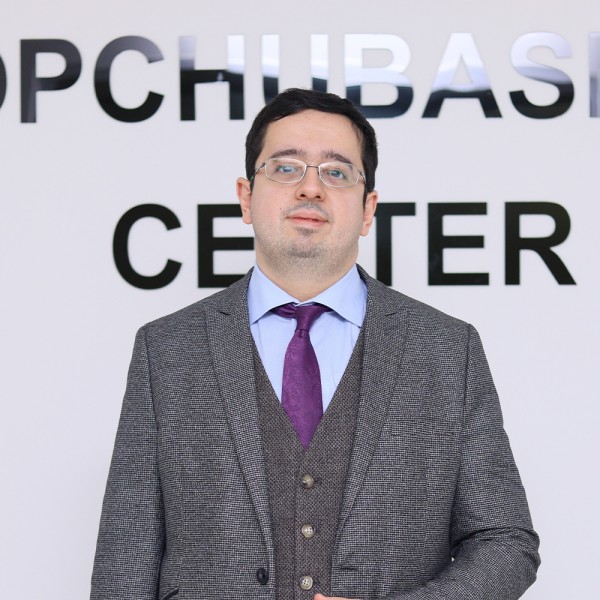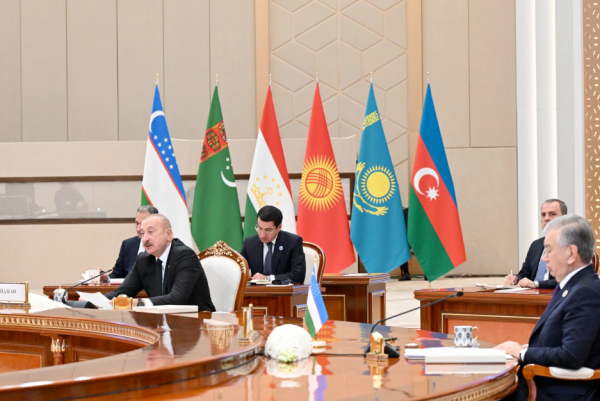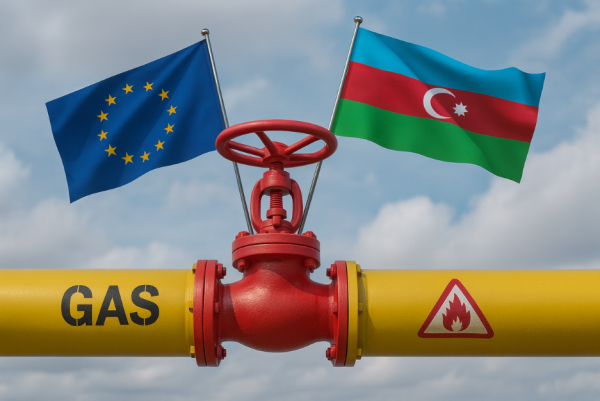Why Armenia’s vision of itself represents a chronic threat to the regional peace

Photo: The Armenian Secret Army for the Liberation of Armenia (ASALA) memorial in Yerablur military cemetery, Yerevan, Armenia. Wikimedia Commons
According to the paradigm of realpolitik, states have no permanent friends or enemies - only interests can be permanent. This thought has been dominant in the foreign policy-making of the last centuries and, though subject to various mutations, has, in general, remained a dominant principle of international relations. However, there have been, and there still are, some exceptions. And one of the most persistent and seemingly counter-intuitive cases thereof remains the foreign policy of Armenia, a small landlocked post-Soviet republic in South Caucasus. The week of furious skirmishes along the border with Azerbaijan, that started on July 12, and subsequent tensions arising between Azerbaijani and Armenian communities in various countries of the world, have reminded the world about the destructive potential of this special case and at the same time invite us to think why this conflict has become so intractable and thoroughly outgrown its initial causes and interests.
To begin with, let us remember the beginnings of the Nagorno-Karabakh conflict which started to unfold in 1988, three years before the ultimate collapse of the Soviet Union. The demands of the Nagorno-Karabakh Armenians (constituting around 75% of the population of this area, which had a status of an autonomous region, oblast, within the Azerbaijani SSR) for “reunification” (or miatsum in Armenian) with the mother-Armenia, were the trigger. The movement defined itself through the discourse of a national awakening and revival, and posed as an inalienable part of the process of democratization which was then beginning in Armenia, along with Azerbaijan and some other Soviet republics. Let’s for now remember this point- it is really important.
The “Karabakh committee”, as the leaders of the secession movement called themselves, of course put forward standard accusations of the violations of Armenians’ cultural rights in Azerbaijan. However, these accusations were, mildly speaking, ill-grounded, as the recently released documentary “Parts of a circle” may attest: the worst oppression cited by the region’s Armenians were the occassional inaccessibility of the TV and radio broadcasts from the Armenian SSR. Other than that, Nagorno-Karabakh had its high school education predominantly in Armenian, hosted an Armenian pedagogical college and a theatre. Moreover, Armenians constituted a significant and influential share of the population of Azerbaijan outside Nagorno-Karabakh, particularly in the country’s biggest cities- Baku, Ganja and Sumgayit, and were widely represented in the republic’s social and cultural elite. Up until now, you cannot find any document-based, hard evidence of systematic violations of the cultural autonomy enjoyed by the Armenian majority of the Oblast’. So, we cannot understand the motives of the Karabakh movement unless we put it into the context of the much wider, global revival of extreme form of nationalism among Armenians of the world.
In 1973, Gourgen Yanikian, an elderly Armenian living in California and a refugee from the 1915 events in the Ottoman Empire, assassinated two LA-based Turkish diplomats, declaring revenge for the alleged genocide as the motive of his crime. This murder inspired a group of Armenian nationalists who in 1975 founded a group called ASALA (Armenian Secret Army of the Liberation of Armenia), whose goal was defined as forcing Turkey to recognize the 1915 events as genocide and make Ankara not only pay generous compensations to the Armenian victims and their families, but also to cede territories (!) of the Eastern Turkey, which, according to the never-ratified colonial Sevres treaty were supposed to become the homeland of would-be Armenian state. To achieve these goals, ASALA unfolded a campaign of full-fledged terror against Turkish diplomats, killing 46 of them in the period until 1990. After the particularly vicious attack at the Orly Airport in France, the group was recognized as terrorist by most major countries of the world, including the U.S.
At the same time, nationalistic attitudes were slowly brewing among the Soviet Armenians, back then very loosely connected with the Diaspora. Since 1965, when the 50-year anniversary of the “genocide” was for the first time openly commemorated in Yerevan, these events started to be held every year on April 24, and in 1967 a massive memorial was unveiled at the site of the Tsitsernakaberd Hill, quickly becoming the symbol of Armenians’ anti-Turkish sentiment. The Soviet government tolerated these expressions of nationalism, which were in general all but prohibited by the official ideology of “friendship of peoples” partly because Ankara was considered a dangerous geopolitical adversary of the Soviets and a puppet of “American imperialism”. However, this produced shocking repercussions, when on January 8, 1977 three explosions took place in Moscow (including one at the underground station), claiming the lives of 7 people. Later that year, three Armenian nationalists were found guilty of these terror acts, the first ever to happen in the USSR. The court concluded them to be an isolated group, though claims about their links with ASALA, which was in the process of creation back then, were subsequently made.
Hence, the 1980s witnessed the rise in exclusive Armenian nationalism driven by resentment and a sense of pending revenge against the Turks. The Karabakh movement, though it succeeded in portraying itself as the vanguard of the Soviet-wide wave of democratization, was heavily imbued with this ideology, which equated Azerbaijanis, ethnically close to the Turkish people, to perilous “Turks” considered perennial enemies of Armenia. That’s why the initially peaceful protests gave way to an interethnic strife in a matter of months, and in 1988 most Azerbaijanis (between 250,000 and 300,000 people back then) were expelled from Armenia by force.
As the both republics became independent in 1991, Karabakh started to attract fidains, mercenaries who had their training at the ASALA camps in the Middle East, many of whom participated in the acts of terror and served prison terms for that. The most famous of them, Monte Melkonyan from California, who was among the organisers of the Orly attack, is now a much-revered national hero in Armenia. The arrival of these people with their fierce anti-Turkic stance, brought the primordial discourse of “much-oppressed ancient nation”, “Armenia from the Caspian to the Mediterranean”, to the fore. Presence of the fidains significantly increased the intensity of atrocities, the most vicious of which happened in the Azerbaijani town of Khojaly where on the night of 26 February 1992 613 unarmed people (including children and the elderly) were slaughtered. And although the negotiation process conducted by the Azerbaijani and Armenian governments, served to bring the conflict to the international level as a “classic” interstate one, it never lost, at least for the Armenian side, its zero-sum “either we or you” character. The words uttered by former Armenian President Robert Kocharyan, who used to be the leader of Karabakh Armenians during the war, in an interview to the British researcher Tom de Waal, that “Armenians and Azerbaijanis are genetically incompatible”, sound as something from the racist playbook. Yet this black-and-white vision of the Armenian history and interests reflect the dominant, if not usually articulated, thinking which among others defines Armenian foreign policies as well.
The major feature of the Armenian strategy ever since its independence- the reluctant but inevitable affiliation with Russian interests- is one example. The Armenian democratic movement perceived Moscow as no friend as well. However, as the conflict intensified and Turkey in 1993 ultimately closed borders with Armenia, Yerevan had no other choice but to fully embrace Russia as security guarantor. Ultimately, the presence of the Russian military base in Gyumri as well as the frequent engagement of former Soviet army units in hostilities on the Armenian side, were among the major factors behind the ultimate Armenian victory. Later on, as the idea of preserving the “security” of the Nagorno-Karabakh (which proclaimed itself an independent republic, not yet recognized by any sovereign state), and the seven adjacent districts occupied by Armenian forces, got entrenched in both the national state of mind and political strategy, any attempts to re-orient Armenia towards Western integration would fail against the need to preserve Russia’s exclusive leverage in the country in exchange for its security guarantees. The failure of the “compliant Armenia” strategy preached by the first President Ter-Petrosyan, encapsulated this permanent deadlock of the Armenian foreign policy. This strategy envisaged gradual shift of Yerevan towards the Western-centered global institutions, including NATO and EU, and distancing from militant exclusive nationalism that characterized Armenia’s attitude towards Azerbaijan and Turkey. Ter-Petrosyan supported the maximally quick return of the 7 occupied regions (the “buffer zone” in the parlance of Karabakh separatists) to Baku and even reportedly contemplated an option of the “single state” for Nagorno-Karabakh within Azerbaijan. Such prospects were rejected by the majority of Armenians, and the President had to resign in 1998, being replaced by a warlord, Robert Kocharyan, who quickly turned to considerably more nationalist rhetoric.
Another exemplary U-turn happened in 2013, when the Sargsyan government, preparing the association agreement with the EU, refused from signing it in the most unexpected manner days before the planned agreement date and a few days later joined the Russia-led Eurasian Economic Union (EEU). The evidence indicates that this decision was obtained by Moscow through pressing hard on the Nagorno-Karabakh issue, pivotal for Armenian politics.
The newest case is the current leader Pashinyan, who swept to power with the agenda of a more transparent and reforming Armenia and prioritized improving ties with the West. In the first year of Pashinyan`s term a lot from both sides was done to relieve the tensions, making 2019 the calmest year on the frontline in at least a decade. However, domestic pressure exerted by nationalists, who manipulated public opinion into believing that the President prepares a “treason” on Karabakh, and growing bitterness with Moscow, triggered Pashinyan to gradually adopt the traditional intransigent mode, and the latest escalation has been the logical outcome of the mounting tensions. In the aftermath of the July hostilities, he made a number of unprecedentedly pro-Russian statements, reassuring Moscow that Yerevan will remain its firm ally. At the same time, the officials and expert community in Armenia are again pushing the idea that only Russian umbrella can save their country from the destruction by “enemy Turks”.
However, violence against peaceful Azerbaijani protesters in Los Angeles, Brussels or London, as well as rioting in Moscow, came as a shock and was the first time the Armenian-Azerbaijani conflict really spilled over the territory of third countries and involved thousands of people with no direct links to the armed forces or politics. Given that the Armenian leadership never bothered to denounce such behavior by their ethnic kin, it must be concluded that the conflict in the eyes of most Armenians, despite of their appellations to international law and the language of realpolitik, is clearly an ethnic one which justifies war by all means. Among the Armenians who came on the streets of Western cities to confront the Azerbaijani crowds, were scattered people bearing the ASALA insignia on their T-shirts, which also indicates the merging of Azerbaijanis and Turks in the radical-nationalist perception.
However, the most dramatic consequence of the intransigent, zero-sum policy of Armenia are the numerous wasted opportunities for the dynamic development of the whole region. Even in the 1990s, when all the three countries of South Caucasus experienced the economic collapse of more or less similar magnitude, Armenian President Ter-Petrosyan warned about long-term adverse outcomes of the uncompromised attitude to the Nagorno-Karabakh issue for his country’s economic development. Since then Armenia has found itself isolated from the major infrastructural projects of regional significance, such as the Baku-Tbilisi-Ceyhan oil pipeline, Baku-Tbilisi-Erzurum gas pipeline, Baku-Tbilisi-Kars railway, as well as many more international initiatives promoted by the Turkey-Georgia-Azerbaijan triangle. The absence of the border with Russia, together with economic problems Moscow has been experiencing since 2014, mean that this partnership is not nearly as lucrative for Yerevan as the hypothetical collaboration with the direct neighbours could have been, and in fact the only serious boon from it is Yerevan’s ability to obtain Russian weapons for lower-than-market prices from time to time – which only strengthens “the party of war” and perpetuates the mentality of a besieged fortress. The resulting dependence on communications with Iran puts severe limits on Armenia’s attempts to deepen cooperation with the West. As a result, in the last 15 years Armenia’s GDP per capita consistently lagged behind Azerbaijan, for some years even falling to the half its level, and in the recent years has also been considerably lower than the respective figure for Georgia. Moreover, Armenian economy, compared to Azerbaijan and Georgian ones, is much more dependent on the inflow of investment from rather limited sources (particularly the Armenian diaspora), which makes it more vulnerable to various shocks and further constrains the range of available policy options, as diaspora money is usually linked with Armenia’s uncompromised and vigorous promotion of the issues of genocide recognition and Nagorno-Karabakh “independence”. The vicious circle of stagnant economy and bellicose rhetoric serves to reward the politicians most radical on Nagorno-Karabakh, since its “defense” from Azerbaijan becomes the only success that can justify the government’s performance.
At the same time, Armenian policies have put significant obstacles to the whole region as well. Amid the growing weariness from the enormous Russian influence, the continuing presence of Russia’s 302nd military base in Gyumri can now be justified only by the guarantee of the status-quo it provides for Yerevan. Unsurprisingly, after initial irritation at the CSTO and Moscow who didn’t rush to interfere into the border skirmishes with Azerbaijan, President Pashinyan had to change his stance and recognize the strategic importance of security partnership with Russia- a victory for Moscow but another blow to the sustainable peace in South Caucasus. The lack of such peace and the constant, if often understated threat of a new escalation between Armenia and Azerbaijan causes skeptical assessment of the strategic importance and potential of the whole region in the West, which throughout his last decade has considerably diminished its presence here; since Obama’s presidency, South Caucasus has been downgraded in the list of U.S. foreign policy priorities. The constant threat of war in South Caucasus was very clear to the whole world in the aftermath of the 2008 Russian-Georgian war, but the fact that Armenia is, unlike Russia, a small, economically backward state has blinded many analysts from fully recognizing its destructive role and put the Karabakh conflict to the back row, relative to the conflicts in Abkhazia and Ossetia. Yerevan’s rejection of compromises and desperate attachment to the Russian security umbrella made a long-term time bomb from Nagorno-Karabakh. The fact that many Armenians abroad perceive Azerbaijani embassies and peaceful rallies as a target, attests to the flawed thinking which perpetuates Armenia’s conflict with “Turks”. At the same time, it made as clear as never before that it would be in the best interest of the international community to return, after many years, to a pro-active role, and take a harsh stance against war-mongering and ethnic radicalism in South Caucasus. It must be finally made clear that Yerevan cannot pretend to be a flagship of democracy in the region and continue its occupation, preaching the ideas of militant primordial nationalism and disregard for international law.







